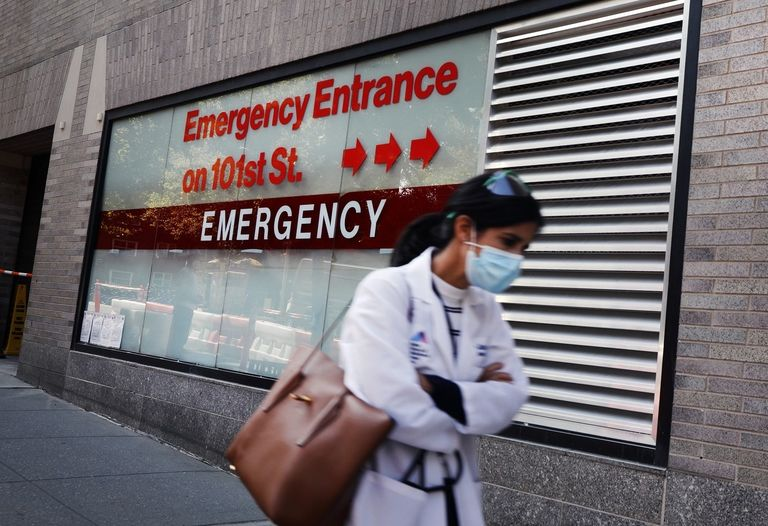The New York State Department of Financial Services has approved health insurance premium rate increases for health insurers doing business in New York.
The state agency said that overall, it has cut the requested rate increases for small group plans by half, cutting them by 52%, and also made a substantial cut in the increases requested for the individual plan rates, cutting those increases by 44%.
Its actions saves consumers and small businesses almost $732 mn. The state said that more than one million New Yorkers are enrolled in individual and small group plans.
In terms of two of the HMO’s who do a lot of business in the Rochester area, Excellus Blue Cross Blue Shield, and MVP Health Plan, Excellus saw its request for an increase in small group plans, reduced slightly, to 12%. The company had requested a 12.6% increase.

MVP was granted a 10.3% increase for small group plans. It had requested an 11% increase.
For the ‘individual market,’ Excellus was granted a 12.2% increase; it had requested a 15.2% increase.
Also for the individual market, MVP requested a 13.3% increase; that was cut in half to a rate hike of 6.5%.
Individual Health Insurance Market

Insurers requested an average rate increase of 22.1% in the individual market, which DFS cut by 44% to 12.4% for 2024, saving consumers $126 mn.
These rates will be further reduced for many consumers who are eligible for federal tax credits.
Last year, over 60% of individuals who enrolled in a Qualified Health Plan through New York State of Health received the federal premium tax credits to lower the costs of premiums. Approximately 248,000 New Yorkers are currently enrolled in individual commercial plans.
These rate decisions do not include the Essential Plan, available through NY State of Health, which as of June 1, 2021 charged no premium for lower-income New Yorkers who qualify. As of 2023, more than one million New Yorkers are enrolled in the Essential Plan.
AM Best is maintaining a stable market segment outlook on the U.S. health insurance industry for 2023, citing reduced pressure from COVID-19-related medical costs, as well as diversified revenues and earnings and strong levels of risk-adjusted capitalization among health insurers.
Earnings from government business particularly remained very strong, supported by elevated margins in the Medicaid segment due to the continued public health emergency declaration and lack of eligibility checks (see Large U.S. Health Insurers Have Expanded Participation in Individual Insurance).
Individual market rate actions
| Insurers | Requested 2024 Rate Actions | Approved 2024 Rate Actions | DFS Modification |
|---|---|---|---|
| Anthem HP (Formerly Empire HealthPlus)* | 20.7% | 8.6% | -58.5% |
| CDPHP* | 23.5% | 12.1% | -48.5% |
| Emblem (HIP)* | 52.7% | 25.1% | -52.4% |
| Excellus* | 15.2% | 12.2% | -19.7% |
| Healthfirst PHSP* | 20.9% | 12.5% | -40.2% |
| Highmark (Formerly HealthNow)* | 22.6% | 13.0% | -42.5% |
| IHBC* | 39.2% | 25.3% | -35.5% |
| MetroPlus* | 26.4% | 17.6% | -33.3% |
| MVP Health Plan* | 13.3% | 6.5% | -51.1% |
| Oscar* | 18.4% | 7.9% | -57.1% |
| UnitedHealthcare of New York* | 20.9% | 12.2% | -41.6% |
| Summary | 22.1% | 12.4% | -43.9% |
Source: The New York State Department of Financial Services
Fidelis filed a 2024 rate application that included a change in the company’s service area, specifically to withdraw from Kings County.
The Departments of Financial Services and Health worked with Fidelis to reverse these changes and avoid significant disruption to policyholders and the market in Kings County.
Fidelis is providing Kings County policyholders who did not receive a notice of their requested 2024 rate increase this required notice. Following a standard thirty-day period for consumers impacted to submit comments on the proposed rates, DFS will review the request and determine an approved 2024 rate.
Small Group Health Insurance Market

Almost 800,000 New Yorkers are enrolled in small group plans, which cover employers with up to 100 employees. Insurers requested an average rate increase of 15.3% in the small group market, which DFS cut by 52% to 7.4% for 2024, saving small businesses $607 million.
A number of small businesses also will be eligible for tax credits that may lower those premium costs even further, such as the Small Business Health Care Tax Credit.
Small group market rate actions
| Insurers | 2024 Requested Rate Change | 2024 Approved Rate Change | DFS Modification |
|---|---|---|---|
| Aetna Health | 19.7% | 4.6% | -76.6% |
| Aetna Life | 25.3% | 9.9% | -60.9% |
| Anthem Healthchoice Assurance (Formerly Empire)* | 14.0% | 6.8% | -51.4% |
| CDPHP UBI* | 12.4% | 9.0% | -27.4% |
| CDPHP* | 19.0% | 15.7% | -17.4% |
| Emblem (HIP)* | 16.0% | 4.6% | -71.3% |
| Excellus* | 12.6% | 12.0% | -4.8% |
| Healthfirst Insurance Company | 22.7% | 13.0% | -42.7% |
| Highmark (Formerly Healthnow) | 22.0% | 14.2% | -35.5% |
| IHBC | 16.8% | 14.8% | -11.9% |
| MVP Health Plan* | 11.0% | 10.3% | -6.4% |
| MVP Health Services Corp.* | 10.3% | 7.6% | -26.2% |
| Oscar* | 19.4% | 15.3% | -21.1% |
| Oxford Health Insurance* | 15.5% | 4.7% | -69.7% |
| UnitedHealthcare Ins Company of New York | 12.5% | 2.7% | -78.4% |
| Summary | 15.3% | 7.4% | -51.6% |
Source: The New York State Department of Financial Services
What you actually pay for health insurance can vary due to a variety of factors, including how much of a benefit may be provided by your employer.
State officials said that the rising cost of medical care, including in-patient hospital stays as well as rapid increases in drug prices, continues to be the main driver behind health insurance premium increases.
Restrictions on short-term US health insurance

White House’s proposal places restrictions on short-term US health insurance. The Biden-Harris Administration is expected to propose a new regulation cracking down on short-term health insurance plans.
The new short-term health plan policy is designed to “ensure this type of coverage does not undermine the Affordable Care Act” and other health insurance markets, according to the rule’s description.
The Affordable Care Act is a comprehensive reform law, enacted in 2010, that increases health insurance coverage for the uninsured and implements reforms to the health insurance market. This includes many provisions that are consistent with AMA policy and holds the potential for a better health care system.
The move comes as the White House tries to focus the nation’s attention on the administration’s efforts to lower prescription drug prices for seniors, crack down on so-called junk fees, fight inflation and improve the overall economy (see Cancer Health Insurance).
The White House’s budget office signed off on the proposed rule last week, according to a regulatory review notice, a signal that the regulations had cleared the final internal hurdles.
Insurers must post a warning alongside short-term plans alerting consumers that they don’t have robust coverage.
Unlike plans sold on Obamacare’s insurance exchange, a short-term plan doesn’t cover essential health benefits. For example, some plans limit doctor visits, others don’t cover prescription drugs.
……………..
Edited by 








